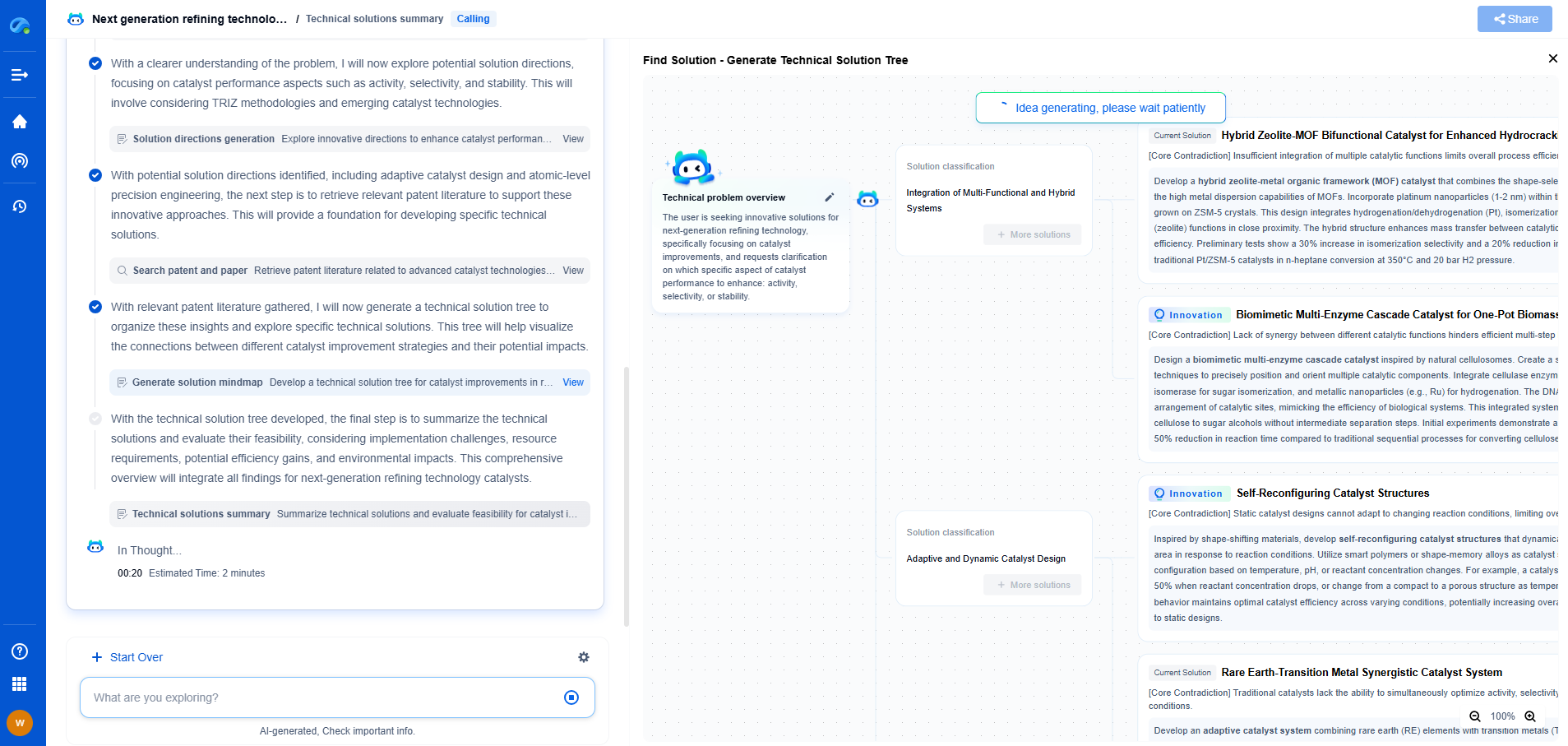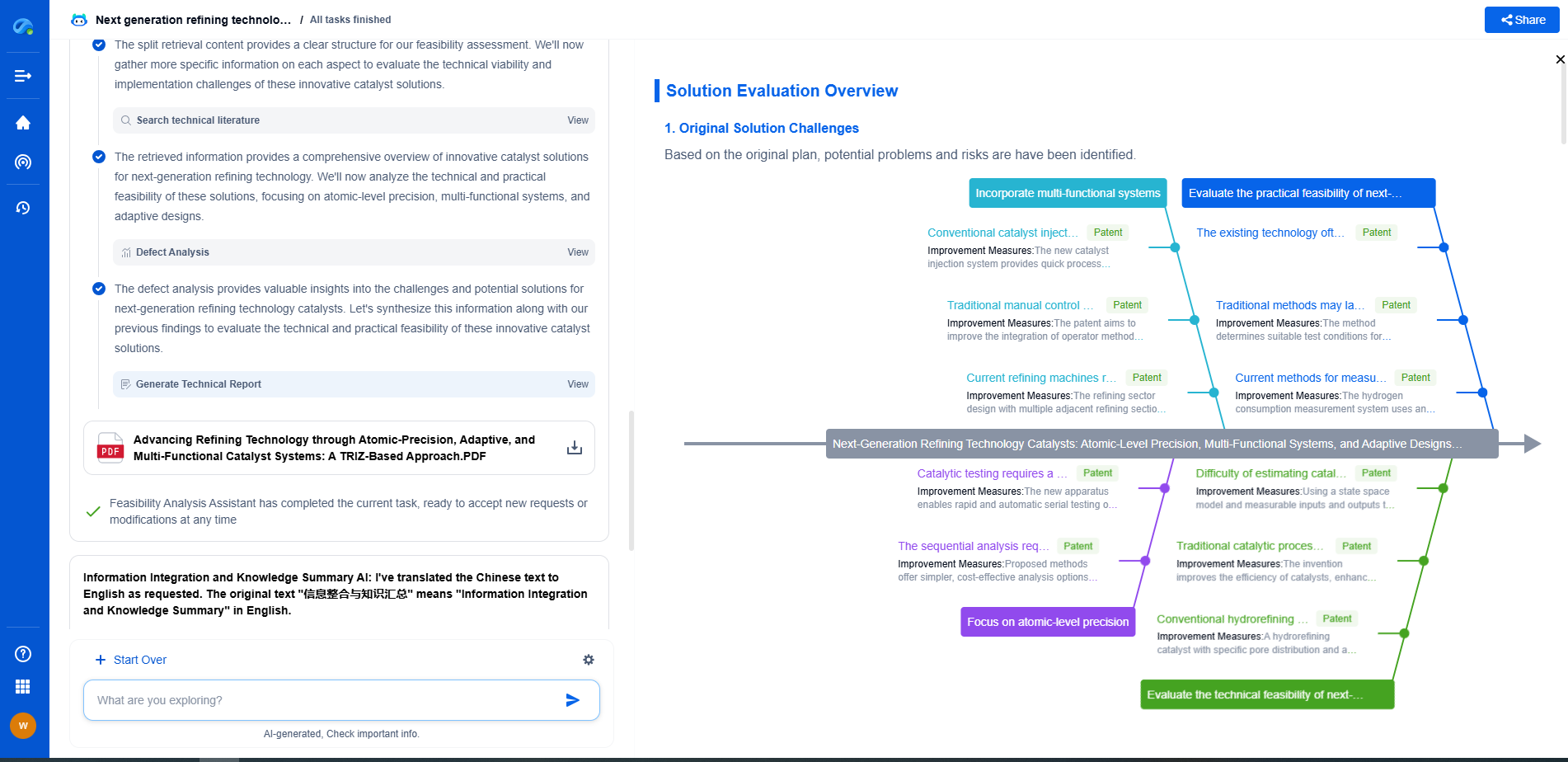How to Select the Right Avalanche Photodiode for Your LiDAR System
JUL 8, 2025 |
Understanding Avalanche Photodiodes
Avalanche photodiodes are semiconductor devices that convert light into electrical current, with the capability to amplify the signal internally through the avalanche effect. This makes them particularly beneficial for LiDAR systems, which require high sensitivity to detect weak return signals. APDs offer faster response times and higher gain compared to standard photodiodes, making them ideal for high-precision applications.
Key Performance Parameters
When selecting an APD for a LiDAR system, several key parameters must be considered:
1. Wavelength Sensitivity: LiDAR systems typically operate at specific wavelengths, such as 905 nm or 1550 nm. It is crucial to select an APD that has peak sensitivity at the operating wavelength of your system to ensure maximum performance.
2. Gain: The gain of an APD determines its ability to amplify the incoming signal. While higher gain can be beneficial for detecting weak signals, it may also increase noise. Balancing gain and noise is essential for optimal performance.
3. Responsivity: Responsivity measures the efficiency with which an APD converts light into electrical current. High responsivity is desirable for detecting low-power signals, enhancing the effectiveness of the LiDAR system.
4. Noise: Excess noise factor (ENF) in APDs can affect the signal-to-noise ratio (SNR). Lower ENF values are preferred as they contribute to clearer signal detection.
5. Bandwidth: The bandwidth of an APD determines the speed at which it can respond to incoming signals. For fast-moving LiDAR applications, such as those used in autonomous vehicles, a wide bandwidth is necessary to accurately capture rapid signal changes.
6. Temperature Stability: APDs can be sensitive to temperature variations, affecting their performance. Consideration of temperature coefficients and the inclusion of temperature compensation mechanisms can help maintain consistent performance across varying environmental conditions.
Matching APD Characteristics to LiDAR Applications
Different LiDAR applications may have distinct requirements that influence APD selection:
1. Autonomous Vehicles: In automotive LiDAR systems, the ability to detect objects quickly and accurately is paramount. This requires APDs with high bandwidth and low noise to ensure rapid signal processing and reliable obstacle detection.
2. Topographic Mapping: For applications such as mapping and surveying, where accuracy and resolution are critical, APDs with high responsivity and gain are necessary to detect fine details over large distances.
3. Environmental Monitoring: LiDAR systems used for environmental monitoring need to function effectively across a range of conditions. APDs with robust temperature stability and wide dynamic range are beneficial for these applications.
Evaluating and Testing APDs
Before finalizing your APD selection, it is important to evaluate and test potential candidates. Assess performance data provided by manufacturers, and, if possible, conduct hands-on testing in conditions that mimic your intended application. This process helps in identifying the APD that best meets your system’s specific requirements.
Conclusion
Selecting the right avalanche photodiode for your LiDAR system involves a careful balance of performance parameters, tailored to meet the needs of your specific application. By understanding the characteristics of APDs and how they align with your requirements, you can enhance the efficiency and accuracy of your LiDAR system, ensuring it performs optimally in its intended environment. Remember to continually assess new developments in APD technology, as advancements can provide additional benefits for your LiDAR applications.
Infuse Insights into Chip R&D with PatSnap Eureka
Whether you're exploring novel transistor architectures, monitoring global IP filings in advanced packaging, or optimizing your semiconductor innovation roadmap—Patsnap Eureka empowers you with AI-driven insights tailored to the pace and complexity of modern chip development.
Patsnap Eureka, our intelligent AI assistant built for R&D professionals in high-tech sectors, empowers you with real-time expert-level analysis, technology roadmap exploration, and strategic mapping of core patents—all within a seamless, user-friendly interface.
👉 Join the new era of semiconductor R&D. Try Patsnap Eureka today and experience the future of innovation intelligence.
- R&D
- Intellectual Property
- Life Sciences
- Materials
- Tech Scout
- Unparalleled Data Quality
- Higher Quality Content
- 60% Fewer Hallucinations
Browse by: Latest US Patents, China's latest patents, Technical Efficacy Thesaurus, Application Domain, Technology Topic, Popular Technical Reports.
© 2025 PatSnap. All rights reserved.Legal|Privacy policy|Modern Slavery Act Transparency Statement|Sitemap|About US| Contact US: help@patsnap.com

